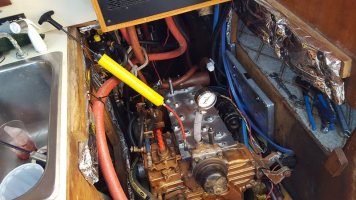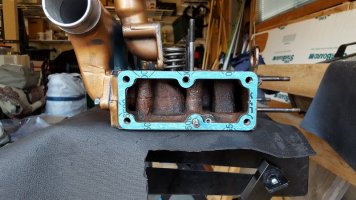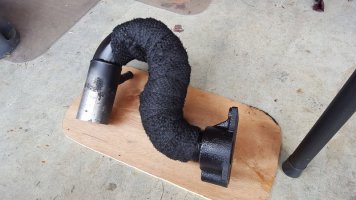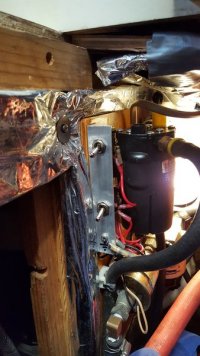Thanks, Guy. Your remarks are entirely appreciated. I have looked into local yards and engine shops for re-engine advice, especially estimates of labor, with a modern 4-mount engine like a Beta 35 or an older, possibly used M-40. A friend who went with a re-engine a few years ago spent 150% of the new engine cost to change his. New mounts, new shaft, etc. Quite successful. A similar experience of ultimate success was related to me by another cruising friend who finally wore out an Atomic 4 and went to a new diesel. Many members of the Ericson board have echoed these stories, too. I spent a little money and time to prove that the problem is likely in the block and I can live with that.
I have a line on an M-40. Age unknown, but it is dusty and a bit rusty from sitting on a pallet here in the PNW. It was bought new and never used and never even unsealed. I think I'll be able go see it next week if we can arrange it. It is complete with heat exchanger and transmission. I haven't looked into a 5432 block or used engine yet. I will ask around about that too. There might be a rough old 5432 diamond out there. I found a Denso injector pump on e-bay, just like mine, right down to the three coats of chipping paint.
The head shop has offered to re-test the head, so if it's not too expensive I may do that. I trust his description of the tests he performs, though. Unless operating temperature is required to open the crack, I expect the head is ok. I certainly heard a couple horror stories of mystery engine problems that survive complete teardown, inspection, re-assembly, and dry-land tests, only to have the same problem when put back in the boat. I won't be going there with this engine.
I did call about my towing coverage from BoatUS. It includes dock-to-dock towing. yay!
I have a line on an M-40. Age unknown, but it is dusty and a bit rusty from sitting on a pallet here in the PNW. It was bought new and never used and never even unsealed. I think I'll be able go see it next week if we can arrange it. It is complete with heat exchanger and transmission. I haven't looked into a 5432 block or used engine yet. I will ask around about that too. There might be a rough old 5432 diamond out there. I found a Denso injector pump on e-bay, just like mine, right down to the three coats of chipping paint.
The head shop has offered to re-test the head, so if it's not too expensive I may do that. I trust his description of the tests he performs, though. Unless operating temperature is required to open the crack, I expect the head is ok. I certainly heard a couple horror stories of mystery engine problems that survive complete teardown, inspection, re-assembly, and dry-land tests, only to have the same problem when put back in the boat. I won't be going there with this engine.
I did call about my towing coverage from BoatUS. It includes dock-to-dock towing. yay!







